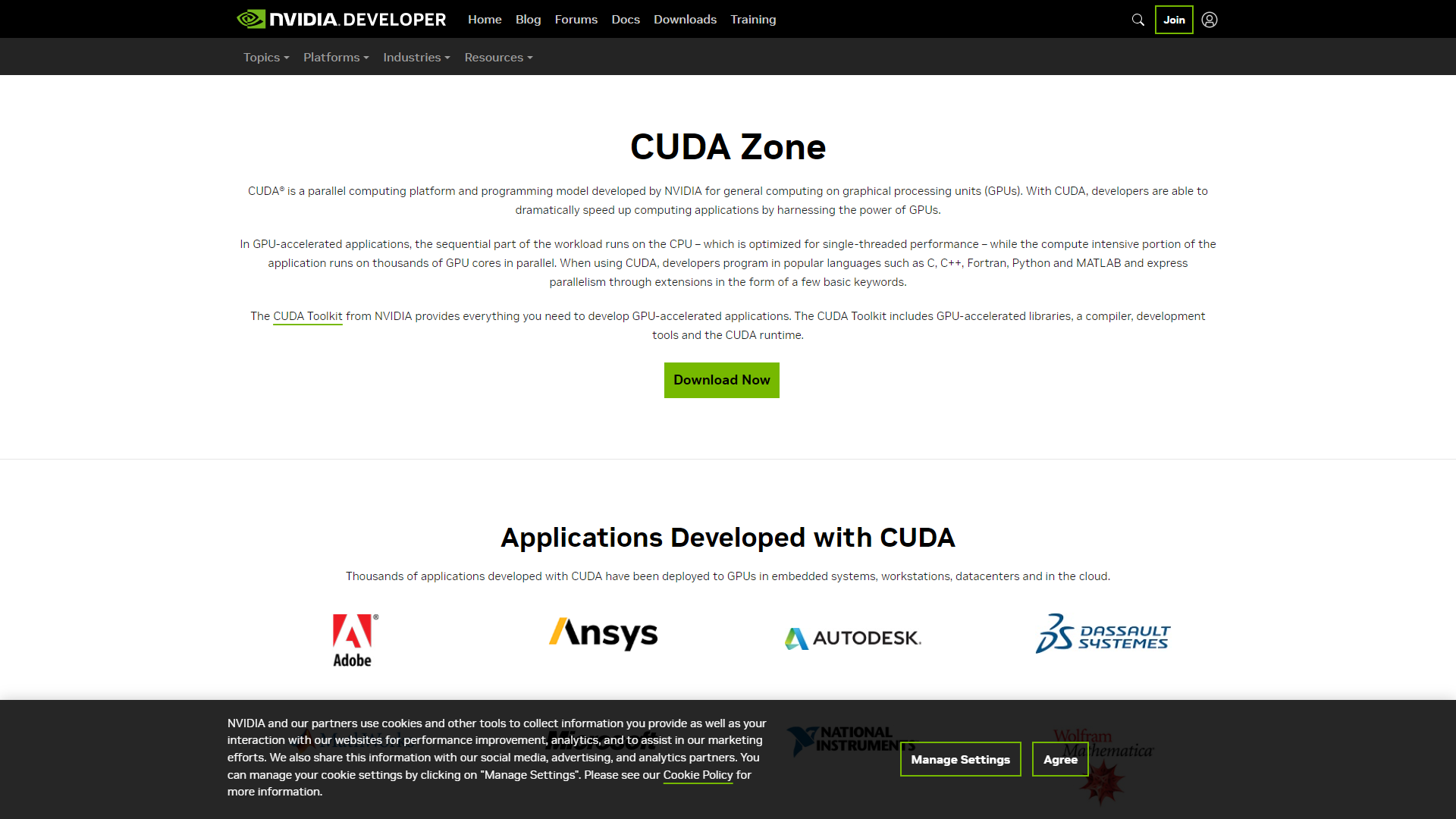Overview
NVIDIA CUDA GL is a powerful parallel computing platform and application programming interface (API) model that allows developers to utilize NVIDIA GPUs for general computing tasks. By harnessing the power of your graphics card, CUDA GL enables applications to run faster and more efficiently, laying the groundwork for advancements in various fields, including data science, machine learning, and graphics design.
Developers can integrate CUDA GL into their applications to achieve real-time processing, allowing for complex calculations to be done much quicker than with a standard CPU. This is particularly useful in industries where speed and performance are critical. CUDA GL is built on the foundation of NVIDIA's Graphics Processing Unit, which specializes in handling multiple tasks simultaneously, making it an ideal choice for developers looking to optimize their applications.
Moreover, CUDA GL provides a versatile environment for coding, making it friendly for both new and experienced programmers. With a robust set of features and ongoing support from NVIDIA, this technology continues to evolve, driving innovation in computing and graphics. Whether you are developing games, simulations, or machine learning models, CUDA GL can significantly enhance the performance of your applications.
Key features
High Performance
CUDA GL can perform tasks many times faster than a CPU, making it ideal for compute-heavy applications.
Parallel Processing
It enables simultaneous execution of multiple operations, which greatly increases efficiency.
Cross-Platform
Works on various platforms including Windows, Linux, and macOS, offering flexibility to developers.
Rich API Support
Provides a comprehensive API that simplifies the development of GPU-accelerated applications.
Integrated Development Environment
NVIDIA offers tools like Nsight that integrate with IDEs for easier development and debugging.
Adaptability
Suitable for various fields such as graphics rendering, scientific computations, and machine learning.
Active Community
A large community of developers who share resources and information, making problem-solving easier.
Regular Updates
NVIDIA frequently updates CUDA GL, ensuring it incorporates the latest advancements in technology.
Pros & Cons
Pros
- Speed
- Efficiency
- Versatility
- Support for Complex Algorithms
- User-Friendly Documentation
Cons
- Hardware Dependence
- Learning Curve
- Limited Compatibility
- Resource Intensive
- Debugging Challenges
Rating Distribution
User Reviews
View all reviews on G2Seamless setup experience & ease of use
What do you like best about NVIDIA CUDA GL?
- Containerizing a graphical program with ML backend using CUDA has become super easy, thanks to NVIDIA's effort of glvnd. With Cuda GL containers, it is much easier to get up and running within a few minutes, avoiding all the headache of incompatible libraries versions and arbitrary crashes. Nvidia toolkit has support for a large range of ml/dl libraries
What do you dislike about NVIDIA CUDA GL?
- From the last time I saw it, I remember the development and release of new containers were paused for some other tech debt work. Other than that, I think community around is good and slowly growing.
What problems is NVIDIA CUDA GL solving and how is that benefiting you?
It has made it easy to quickly set up my ML/DL environment a churn out a POC for an idea that is floating. For example, if we were to create profiles of similar companies based on their 100s/1000s of employees, or create avatar animations or show product in action, any idea can be brought into action in a matter of a few days. This helps make the business decision easier and with more supporting data. Previous to these, often I used to create just command line programs since Cuda and OpenGL interop was sort of difficult to set up.
good tech to learn basics of parallel programming using GPUs
What do you like best about NVIDIA CUDA GL?
I used CUDA in college to study stuff like parallel processing with GPUs so it's good if you want to know the basics and then start off with more advanced steps
What do you dislike about NVIDIA CUDA GL?
The only disadvantage seems to be its age, it's good...
Great boost to your ML/DS applications
What do you like best about NVIDIA CUDA GL?
-The best part about it is the cross platform support which ensures that it behaves in same manner throughout different operating systems.
-It is quite easy to integrate it with already built model and is quite helpful in speeding up compute heavy models/a...
First impression of early NVIDIA CUDA libraries
What do you like best about NVIDIA CUDA GL?
I worked on NVIDIA CUDA long time back in 2010. I was building a coding assessment platform similar to Leetcode but for NVIDIA CUDA, which tracks the number of cores and memory usage along with correctness of the solution. I found it difficult to understan...
Excellent in performance and durability
What do you like best about NVIDIA CUDA GL?
I have been using NVDIA from 6 years now and it has been very good in performance. Durability at its best.Running smoother for 6 years is something which should be appreciated.
What do you dislike about NVIDIA CUDA GL?
There is nothing I dislike regarding...
Company Information
Alternative Data Science And Machine Learning Platforms tools
FAQ
Here are some frequently asked questions about NVIDIA CUDA GL.
CUDA GL is a platform that allows developers to use NVIDIA GPUs to perform general-purpose computing tasks.
It allows for parallel processing, executing multiple operations simultaneously to speed up tasks.
CUDA GL supports languages like C, C++, and Python among others.
Yes, you need an NVIDIA GPU to take advantage of CUDA GL features.
While CUDA GL has resources for learning, it may have a steep learning curve for those new to programming.
Absolutely, CUDA GL can significantly enhance graphics rendering and processing in games.
Applications in fields like data science, AI, and graphics rendering benefit greatly from CUDA GL.
NVIDIA regularly updates CUDA GL to incorporate new features and improvements.

